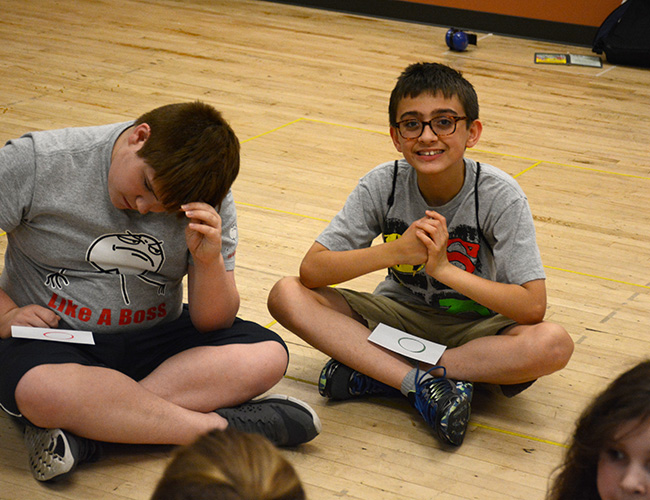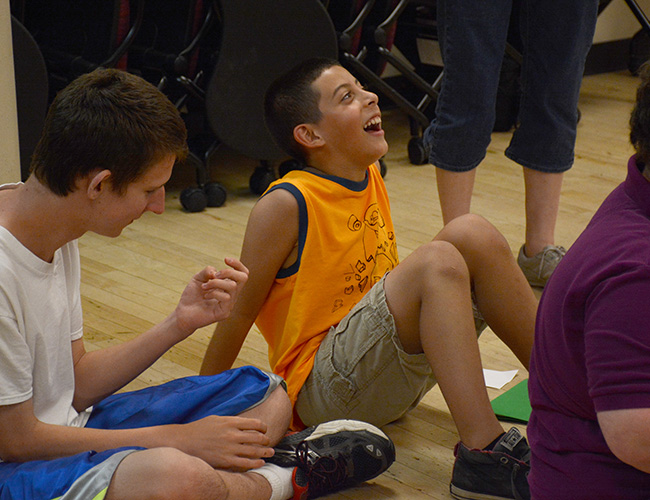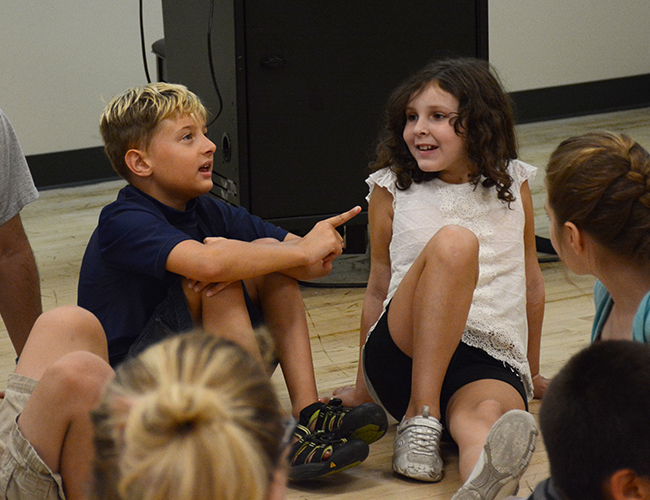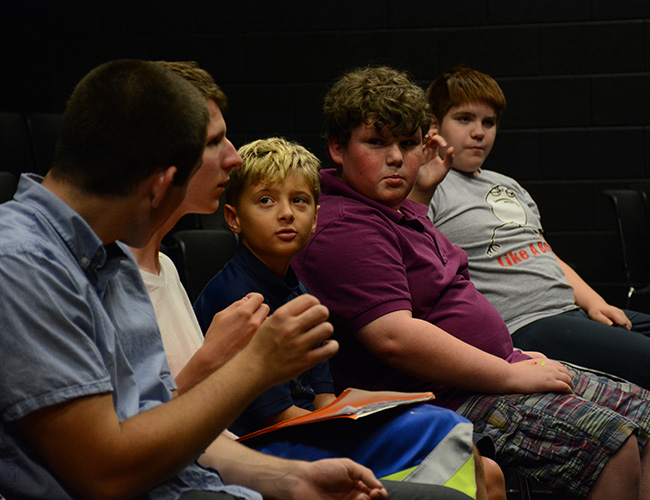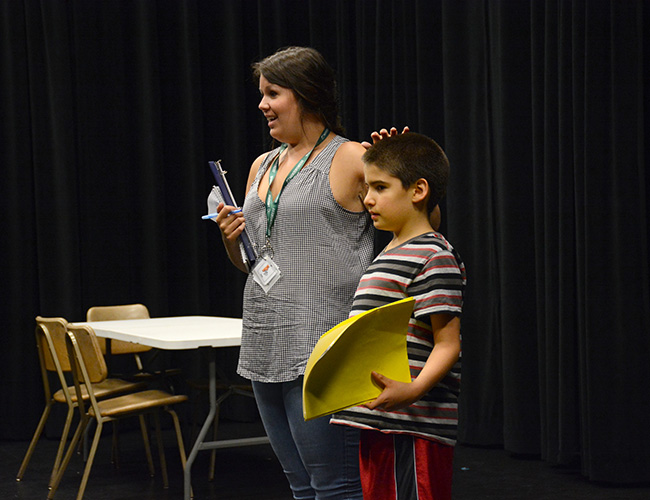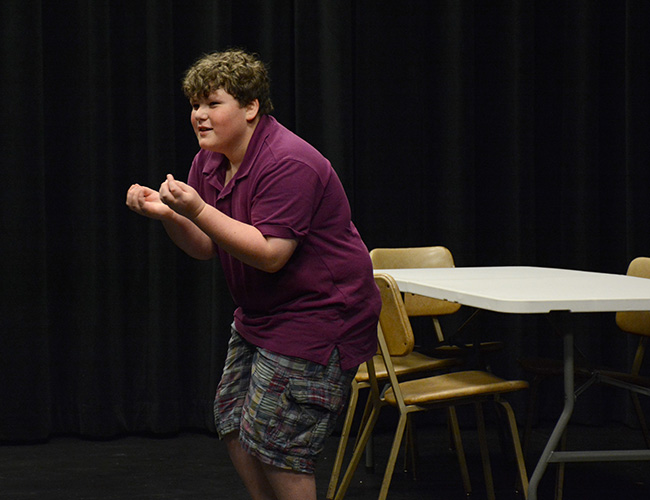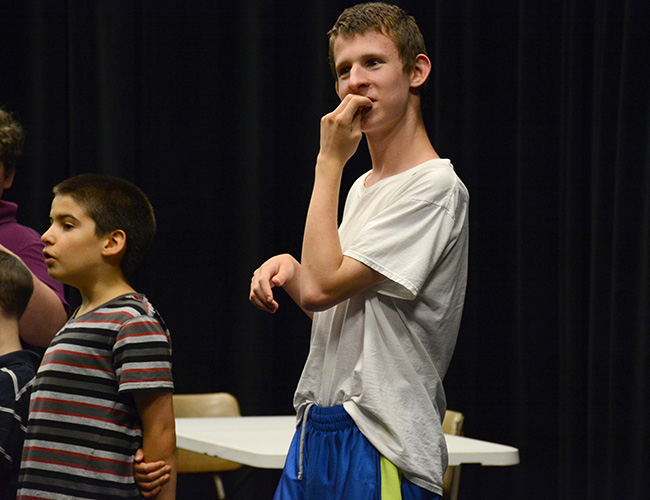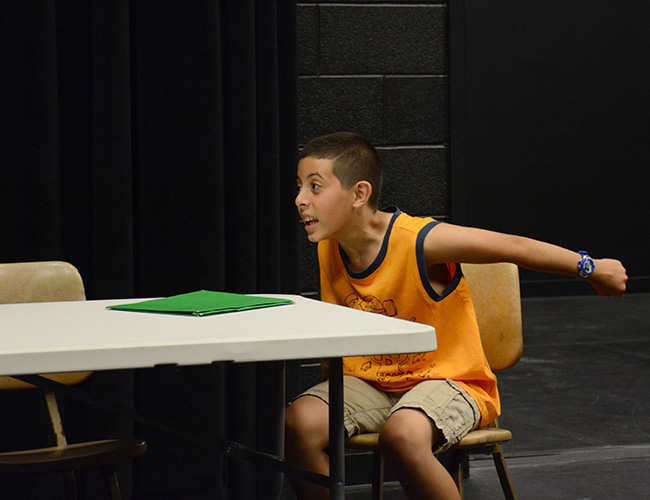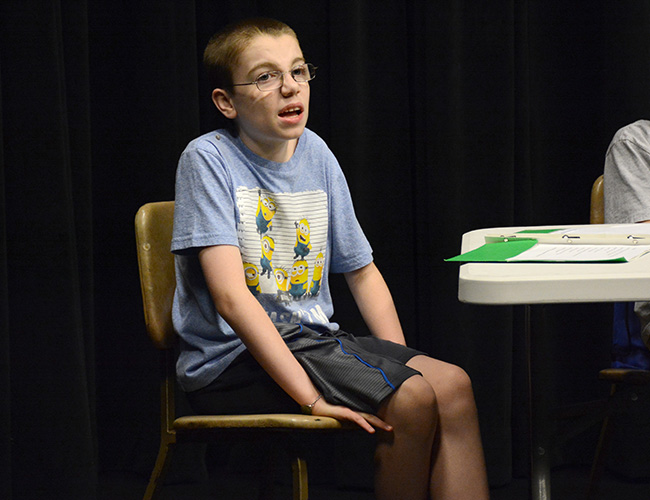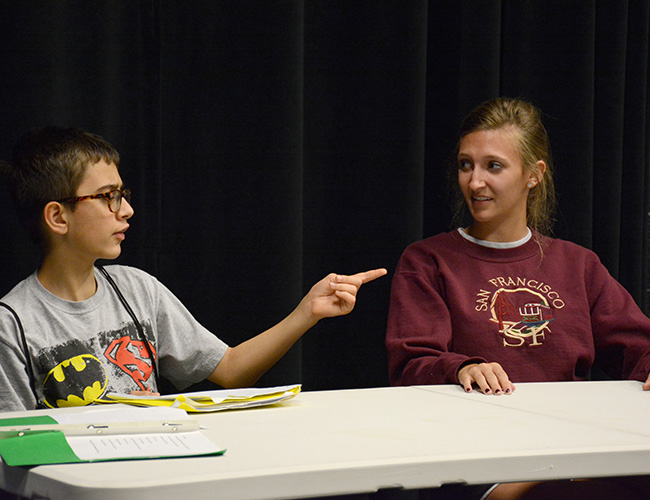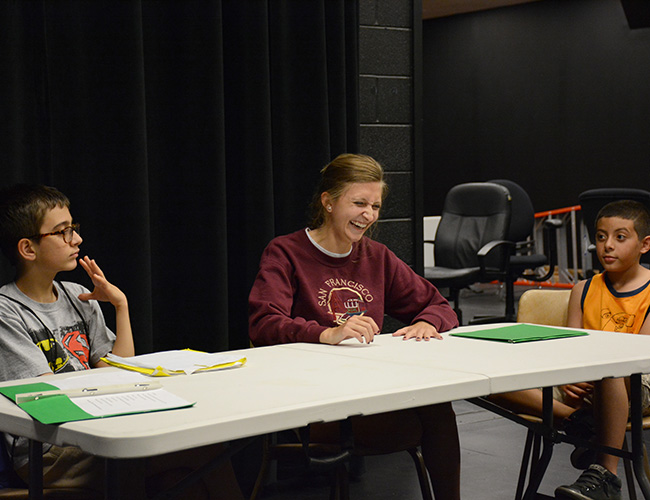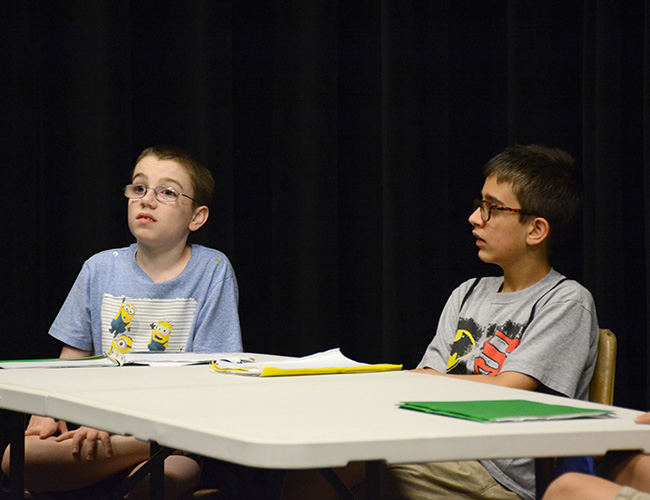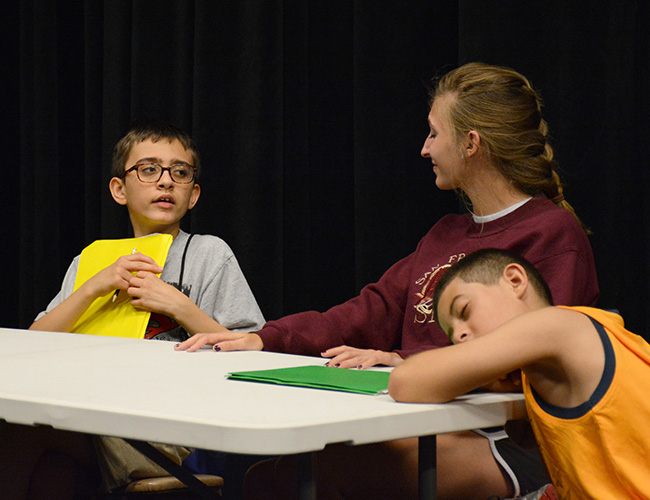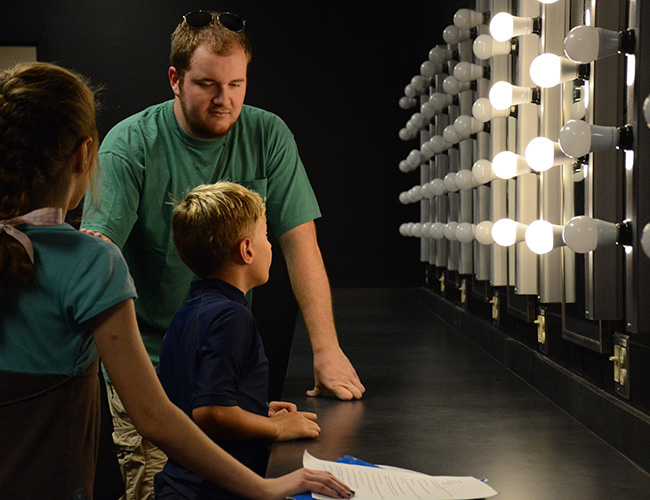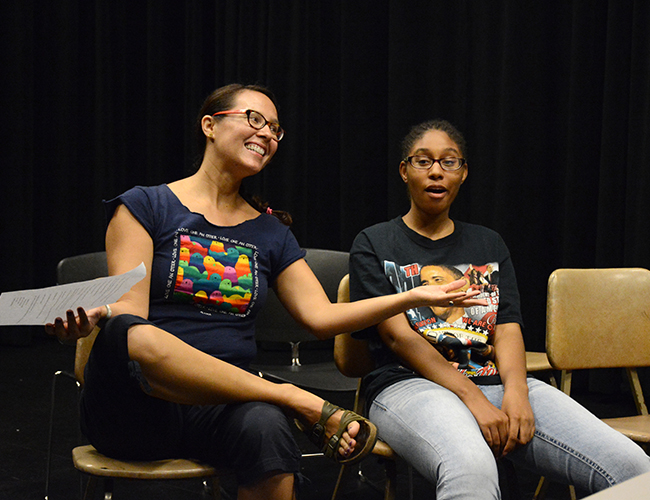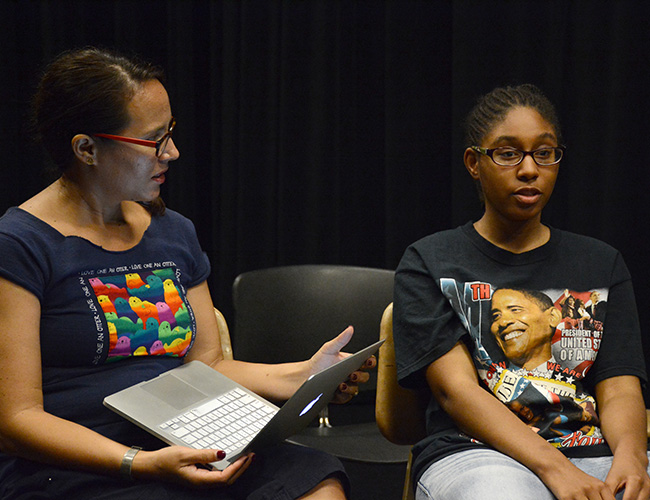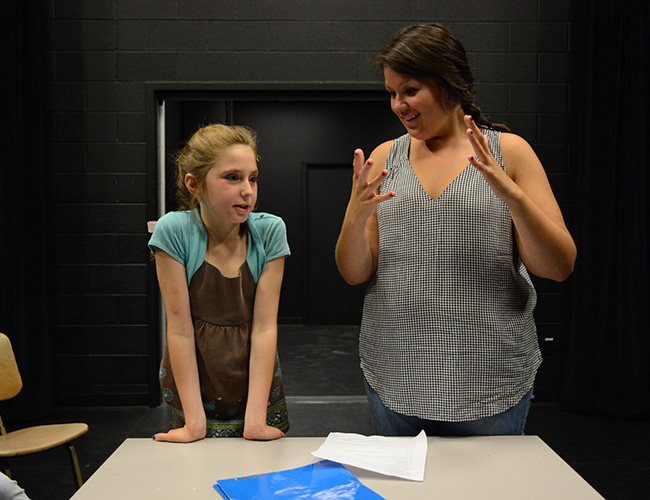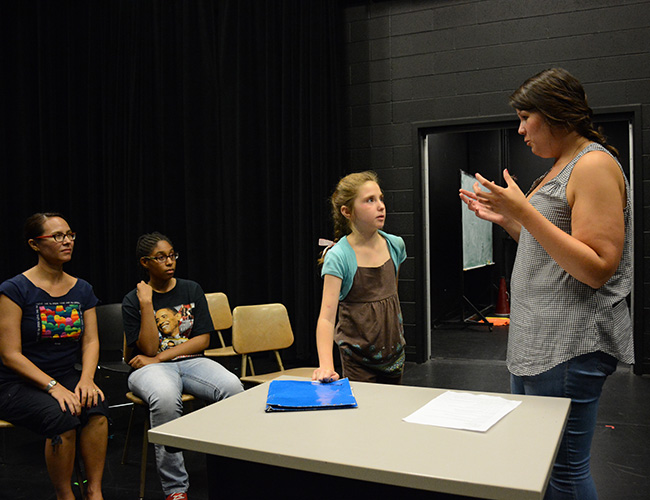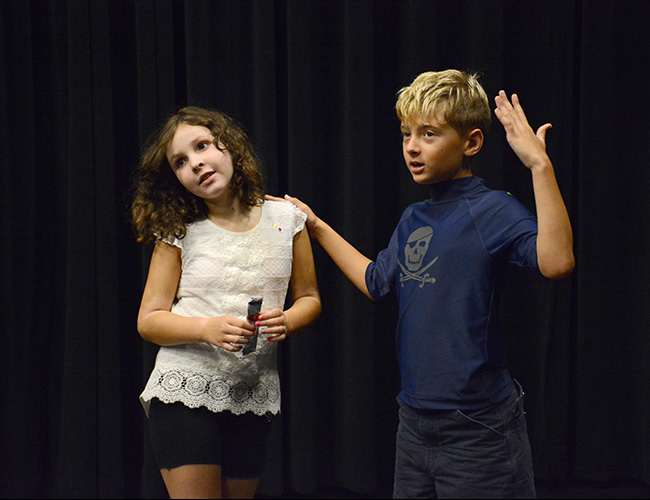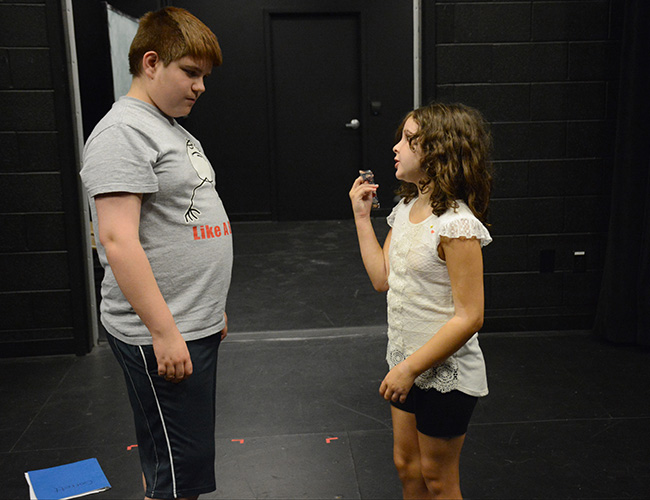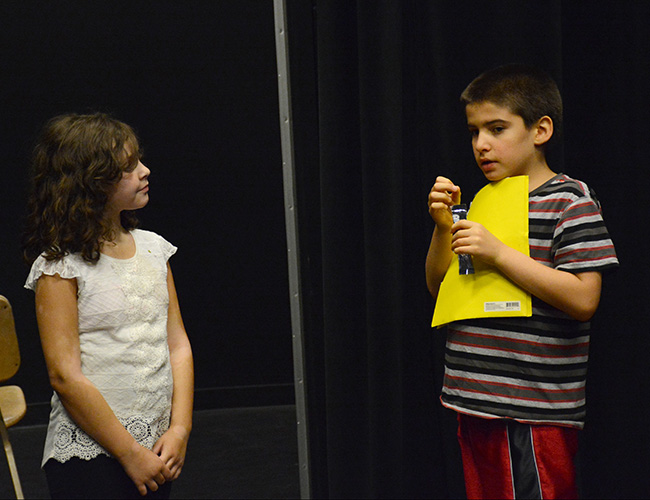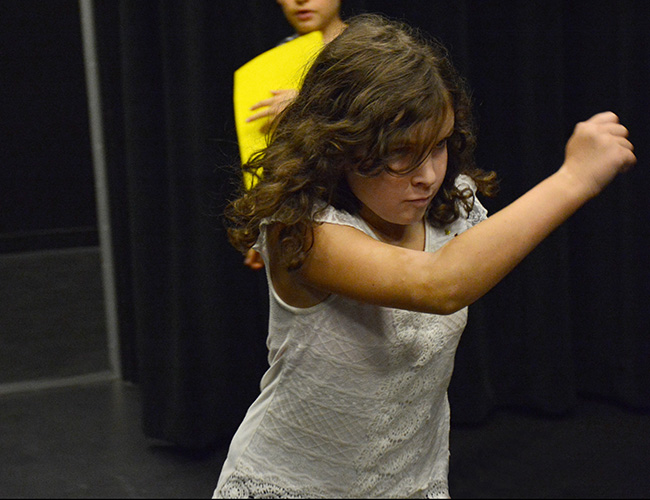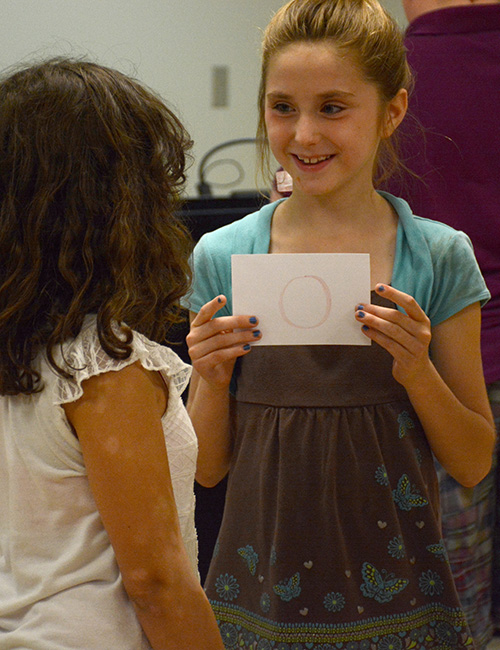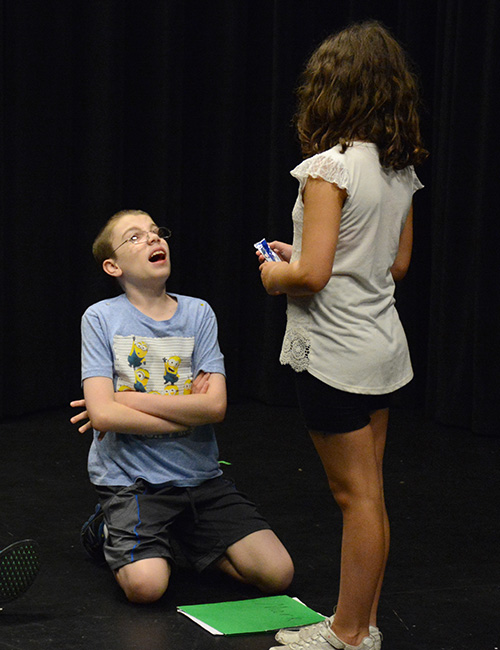College of Arts and Sciences Newsroom
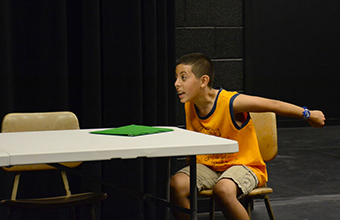
Brighter Connections
This summer at the University of Dayton, a group of special needs children are learning to communicate as make-believe characters through Brighter Connections Theatre. The goal is to help them express themselves in real life.
Greeting someone by saying "hello" may come easy for most people, but children with autism spectrum disorder often struggle with common social interactions.
This summer at the University of Dayton, a group of special needs children are learning to communicate as make-believe characters through Brighter Connections Theatre. The goal is to help them express themselves in real life.
"All of our students at some point on stage are acting and speaking through a character that either deals with or experiences the same struggles that they do," said Katie O'Leary, Brighter Connections’ founder and president.
The Centers for Disease Control and Prevention estimates that about one out of every 88 children will be identified with autism spectrum disorder. Children with autism may have difficulty developing language skills and understanding what others say to them. They also may have difficulty communicating nonverbally, such as through hand gestures, eye contact and facial expressions.
O'Leary created Brighter Connections in 2013 to help children with autism improve their social and behavioral skills through the therapeutic use of theater. The six-week summer program, open to ages 8-14, emphasizes children with autism, but anyone is welcome to participate. For its first three years, Brighter Connections held its rehearsals and performances at the Dayton Theatre Guild.
Now the University has partnered with Brighter Connections to host the nonprofit organization on campus. The students will give two public performances at 2 p.m. Saturday and Sunday, July 16-17, at the Fitz Hall Black Box Theatre. Admission is free, but donations will be accepted.
The University is donating facilities, and faculty and student volunteers. The partnership also provides opportunities for the children to learn about the technical side of theater, including lighting, set design, costumes and props.
"Instead of just being on stage, learning lines and performing, they now have all these different aspects of theater that are opened up to them," O'Leary said.
Michelle Hayford, director of the theatre, dance and performance technology program, approached O'Leary about the partnership after she and fellow theatre faculty member Donna Beran saw last summer’s Brighter Connections show.
"I was just really moved by the whole experience of watching these kids succeed with — and in spite of — a struggle," Hayford said.
Brighter Connections' work is an example of applied theater, one of four concentrations in the University’s theatre program. Applied theater involves the use of drama practice in an education, community or therapeutic context.
"My faculty in the theatre program are very committed to this practice of applied theater — to thinking about how we use theater to serve others, and how we use our talents in the service of others and to benefit our community," Hayford said.
Travis Dwire, a theatre major from New Lebanon, Ohio, is one of seven undergraduates working this summer with Brighter Connections. He and five others are participating as part of the prestigious Dean’s Summer Fellowship program administered by the College of Arts and Sciences.
Dwire has enjoyed working with the special needs youth in preparation for their performances. "I'm sure it will help with patience and understanding," he said.
The children rehearse Tuesday through Thursday evenings at Fitz Hall. Registration is $15 and enrollment is capped at 12 children to maintain a low student-volunteer ratio.
As O'Leary and two volunteer directors lead role-playing exercises, sketch writing workshops and script rehearsals, University and community volunteers work individually with the children and record their progress toward meeting communication goals.
Ellen Pelfrey of Vandalia said she has seen the impact the program has made on her 14-year-old son, Garrett, who is now in his second year with Brighter Connections. Despite lots of anxiety about trying something new, Garrett performed in about six sketches last year and did a great job, she said.
Better still was the email Garrett's speech therapist sent last fall after the start of the new school year.
"She said, 'I don’t know what you've done with Garrett this summer, but he has blown all of his speech goals out of the water,'" Pelfrey said.
O'Leary hopes the University partnership will allow her to expand Brighter Connections in Dayton and possibly beyond.
A 2015 graduate of Bowling Green State University, where she founded the troupe as her Honors College project, O'Leary now works as a middle school special education teacher in Columbus. Her long-term plan calls for launching a second troupe there in the future.
"Ideally, we would love to have multiple programs going on at the same time in order to reach more kids," she said.
- Dave Larsen, communication coordinator, College of Arts and Sciences

